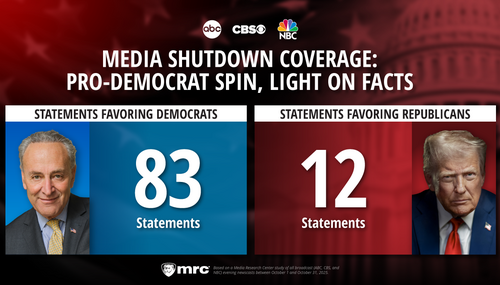The front of the Washington Post Style section on Saturday was dominated by two features on Hollywood stereotyping. At the bottom was Teresa Wiltz suggesting that Angelina Jolie playing Afro-Cuban Mariane Pearl in "A Mighty Heart" is somehow comparable to blackface minstrel shows. But that's not as odd as the top story by William Booth on stereotyped Arab villains, illustrated by the cartoon image of Jafar, the villainous vizier in the Disney cartoon "Aladdin." Earth to the Post: everyone in "Aladdin," heroes and villains, is Arab.
Booth's story actually only raised the issue of the opening song lyrics of "Aladdin," which joked about vicious ear-slicing barbarians, which the Arab-American activists successfully pressed Disney to remove. After that scrubbing, I imagine the children would also hear about "Ali Baba and the Forty Upstanding Merchants." The star of the Booth piece, retired professor Jack Shaheen, also deplored the Fox drama "24" as "the worst of smears" for portraying American Arabs as the terrorist next door. Booth began in Los Angeles:
A full house has turned out at the Directors Guild of America for the L.A. premiere of the new documentary "Reel Bad Arabs," which makes the case that Hollywood is obsessed with "the three Bs" -- belly dancers, billionaire sheiks and bombers -- in a largely unchallenged vilification of Middle Easterners here and abroad.
"In every movie they make, every time an Arab utters the word Allah? Something blows up," says Eyad Zahra, a young filmmaker who organized the screening this week with the support of the American-Arab Anti-Discrimination Committee.
Shaheen also complained, for example, about Eugene Levy playing a ripoff artist called Mr. Habib in "Father of the Bride II." Shaheen told Booth to imagine Mr. Habib as a Jew and see if it was funny. But Booth never pressed Shaheen in print to imagine how the Jew is caricatured in the Arab world of images. Is the pot calling the kettle black? The Post doesn't seem to think that's worth asking.
Wiltz's article on Angelina Jolie doesn't so much attack Jolie or her husband Brad Pitt (who won the movie rights to the Pearl biopic) as much as it dwells on our collective guilt for historic American racism and racial stereotyping. "Ponder the societal implications of Jolie sporting a spray tan and a corkscrew wig. Discuss: Is this the latest entry in the American canon of blackface --21st-century style?" After a bit of dueling bloggers, including a challenger to the blackface charge ("what are you practicing here, the one drop rule?"), Wiltz quickly turns to history:
The debate is cast against the backdrop of the United States' troubled legacy of minstrel shows, where white actors slapped on burnt cork or shoe polish, the better to mock African Americans. Film stars Bing Crosby, Bob Hope and Eddie Cantor performed in blackface, as did actors in D.W. Griffith's "Birth of a Nation," using greasepaint and murderous stereotypes to reinforce America's worst fears about black men.
It's a little odd to drag in films like Griffith's -- from 1915 -- as easily comparable to 2007. When Mariane Pearl proclaims she liked the choice of Jolie, Wiltz patronized her:
As a European, Pearl may well process race differently than an American woman of a similar mixed-race heritage, who historically in this country would have been deemed "black" and therefore subject to the peculiarities of American-style racism.
Wiltz then returned to the ancient slights of Hollywood as she wrapped up:
But Hollywood has long been conflicted when it comes to telling the stories of mixed-race people. In 1949, Lena Horne was up for the title role in Elia Kazan's "Pinky," playing a light-skinned black woman who looked white. Jeanne Crain, who was white, got the part. In 1951, Horne was slated to play "Julie," the "tragic mulatto" in "Show Boat." But Hollywood wasn't too comfortable with interracial love scenes, so Ava Gardner ultimately got the part, and makeup artists used Horne's makeup (Max Factor's "Egyptian Tan") to give Gardner that cafe-au-lait look.
But there were much worse injustices committed against American blacks in 1949 or 1951 than casting decisions. It's just strange that the Washington Post thinks all these old stories are plausibly connected to Pitt and Jolie and their peculiarities of their liberal humanitarian activism and their multi-racial family matters.
With this kind of sensitivity to Hollywood and race, when will the Post acknowledge Robin Williams slamming Catholic priests last week on the Leno show? A search of the Post archives shows no Williams-Leno story yet.




